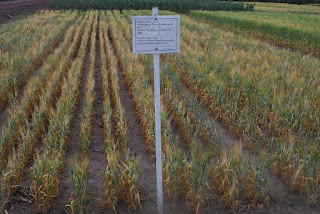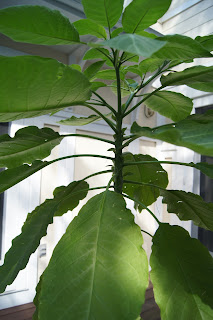 |
| Not long until the winter solstice |
Footprints in this weekend’s snow reveal that even in winter there’s a lot going on in my yard that I don’t see.
 |
| Squirrel prints, or something bigger? |
I thought of this when I read Steve Aitken’s description of a painful experience in this month’s Fine Gardening (“I believe in a critter-proof garden.”) His first foray into growing lilies from bulbs ended when his flower buds became a meal for foraging deer: “. . . all that greeted me were some newly topless stems. And hoof prints.”
 |
| Luckily my lilies are safe from deer |
Back here in the first ring of suburbs, our yard hosts mobs of sparrows, sometimes flocks of starlings, and a coterie of small native birds that frequent the feeders. Turkeys rarely penetrate the fenced yard, and we’ve never seen a coyote on our third-of-an-acre property.
Nights bustle with mammal activity as opossums, skunks, voles and raccoons lead their lives nearby but mostly unobserved. In daylight, rabbits have become an everyday sight in my yard in the warm months, and I occasionally glimpse chipmunks. Squirrels are so common that we ignore their acrobatic prowess.
 |
| If squirrels were rare, their abilities would amaze us |
In the city center rats, pigeons, squirrels, and European sparrows live as “human commensals,” species that benefit from a relationship with humans without affecting us directly. In my suburban town, a lot of animals have adapted to living near humans, but I wouldn’t say that they benefit. They’ve adjusted to our taking over their space, but they often pay a high price for proximity.
For example, a recent sunrise revealed a dead opossum in the middle of a busy nearby street. Possums seem to be particularly ill-equipped for dodging cars, and in fact much of their mortality is caused by human activity. This one probably was trying to get ready for winter and thought she could cross that open space under cover of darkness (Here’s a link to some fascinating opossum information).
 |
| Opossum mother and babies |
So far I’ve had the luxury of enjoying animal sightings, after adjusting my gardening expectations. I learned long ago not to try to grow sweet corn, because raccoons were much better than me at sensing when the ears ripened. If I plant tulips, I know there’s a good chance squirrels will bite off the flowers as they open. I accept that I won’t harvest blueberries from my bushes, because birds will get there first.
But I’m not primarily a food gardener, and I can live without flowers that are too delicious for wildlife to pass up. Gardeners farther from the city may be trying to scare animals away or fence them out. Here in the suburbs, I try to offer a garden where we can all get along.
Dear readers, I'm going to take a break next week. Best wishes for happy and peaceful holidays. See you in 2017.













































